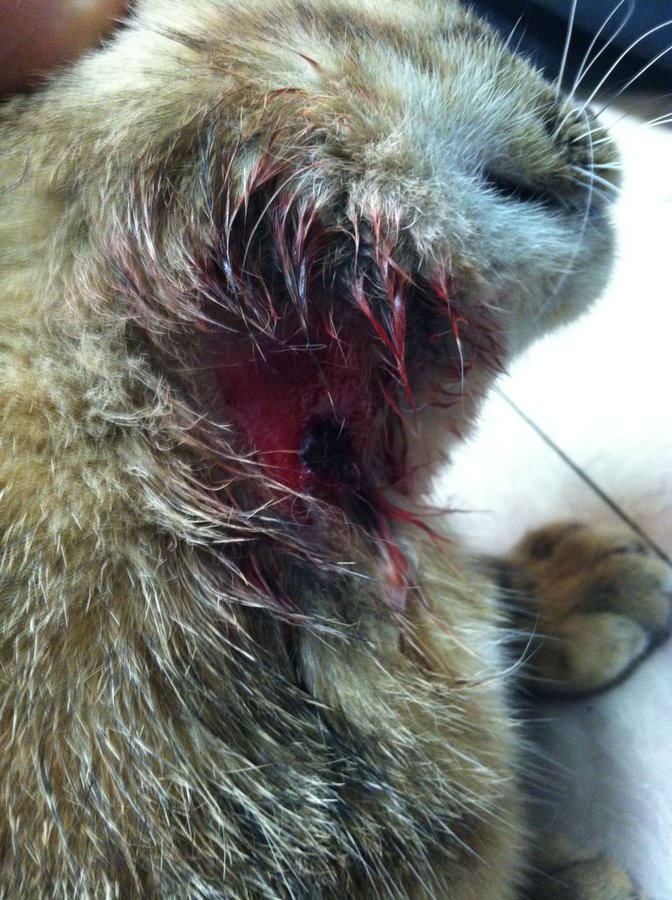- Joined
- Mar 28, 2015
- Messages
- 70
- Purraise
- 5
Hello
I have a 1 and 1/2 year old unspayed runt tabby. She is beautiful and I care so much about her. Its tearing me apart to see here wound getting like this. It started with a tiny scab on her neck, you could barely feel it. I assumed it happened when she and my other girl cat were playing (they love each other but sometimes get rough!). Well its been a couple months now and the wounds been getting larger and larger, and she keeps ripping open the scab when it heals making the process longer and longer. I have taken her to the vet and they gave me antibitoics and gave her a steroid shot but it did not do anything..I have been trying so hard to find a root to this problem. I am now using food grade Diatemaceous Earth, Apple Cyder Vinegar, and better quality food along with feeding her cooked chicken once or twice a week.. I thought mange or an allergy could be a suspect because she just keeps scratching at the wound.. I just have no idea and it keeps getting worse. I hardly trust vets at this point, none of them have given me much help and have been emptying my pockets. Any help, suggestions, or experience would be greatly appreciated.
I have a 1 and 1/2 year old unspayed runt tabby. She is beautiful and I care so much about her. Its tearing me apart to see here wound getting like this. It started with a tiny scab on her neck, you could barely feel it. I assumed it happened when she and my other girl cat were playing (they love each other but sometimes get rough!). Well its been a couple months now and the wounds been getting larger and larger, and she keeps ripping open the scab when it heals making the process longer and longer. I have taken her to the vet and they gave me antibitoics and gave her a steroid shot but it did not do anything..I have been trying so hard to find a root to this problem. I am now using food grade Diatemaceous Earth, Apple Cyder Vinegar, and better quality food along with feeding her cooked chicken once or twice a week.. I thought mange or an allergy could be a suspect because she just keeps scratching at the wound.. I just have no idea and it keeps getting worse. I hardly trust vets at this point, none of them have given me much help and have been emptying my pockets. Any help, suggestions, or experience would be greatly appreciated.
Last edited by a moderator:










